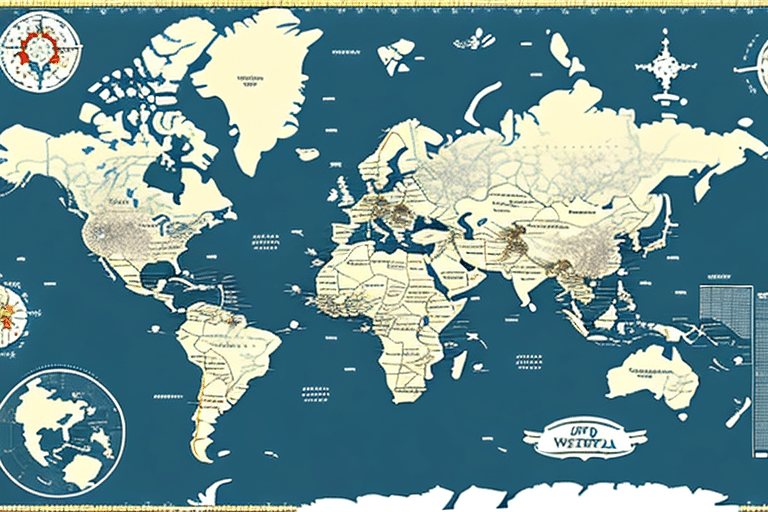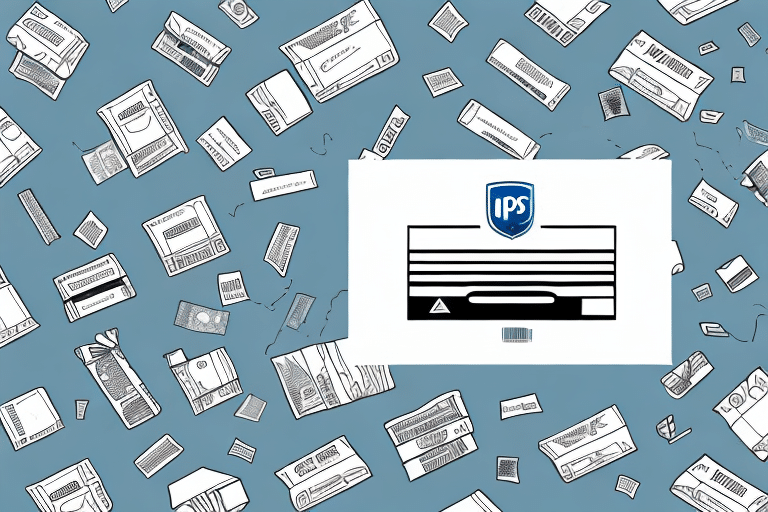How to Negotiate Published Rates in UPS WorldShip
If you are a business owner or frequently ship items with UPS WorldShip, negotiating published rates can be a valuable strategy to reduce shipping costs. This guide provides a comprehensive approach to negotiating better rates with UPS WorldShip, helping you identify optimal rates tailored to your shipping needs and create a persuasive proposal for UPS representatives.
Understanding UPS WorldShip
UPS WorldShip is a robust shipping software designed to streamline the shipping process for businesses of all sizes. It allows users to enter shipping information, print labels, track packages, and manage a variety of shipping options, including ground, air, and international services. By integrating seamlessly with other business systems such as inventory management and order processing software, UPS WorldShip minimizes manual data entry, thereby reducing errors and saving time.
Key Features of UPS WorldShip
- Automated Shipping: Automate the creation and processing of shipping labels.
- Integration Capabilities: Sync with existing business systems for seamless operations.
- Reporting and Analytics: Generate detailed reports on shipping activities to identify cost-saving opportunities.
- Customizable Options: Tailor shipping preferences to meet specific business needs.
For more detailed information, visit the official UPS WorldShip page.
The Importance of Negotiating Published Rates
Managing shipping costs is a critical component of business operations. While UPS WorldShip offers published rates accessible to all users, these rates may not always align with your unique shipping volume and frequency. Negotiating published rates allows businesses to secure more favorable terms, potentially leading to significant cost savings and enhanced profit margins.
Benefits of Negotiation
- Cost Efficiency: Lower shipping costs directly contribute to increased profit margins.
- Customized Solutions: Tailored rates that reflect your specific shipping patterns and needs.
- Long-Term Savings: Establishing favorable rates can lead to sustained cost reductions over time.
According to the ShipBob blog, businesses can save up to 15% on shipping costs through effective negotiation strategies.
Researching Your Shipping Needs
A thorough analysis of your shipping requirements is essential before entering negotiations. This involves evaluating the number of packages you ship, their weight and dimensions, shipping destinations, and the type of products you handle. Understanding these factors will enable you to determine which UPS WorldShip services best suit your business and negotiate rates that accurately reflect your shipping profile.
Key Considerations
- Shipping Volume: High-volume shippers often have more leverage in negotiating rates.
- Package Specifications: Heavier or larger packages may incur higher costs, influencing rate negotiations.
- Destination Diversity: Shipping to multiple locations can affect rate structures.
- Product Nature: Special handling requirements for fragile or hazardous materials can impact shipping costs.
Analyzing your shipping data using tools like UPS Integrated Fulfillment can provide valuable insights for your negotiation strategy.
Preparing for Negotiations
Effective preparation is pivotal to successful negotiations. Begin by reviewing the current published rates offered by UPS WorldShip and identifying areas where cost savings are possible. Gather relevant data points such as historical shipping volumes, growth projections, and shipping patterns to support your proposal.
Steps to Prepare
- Analyze Current Rates: Understand the existing rate structure and identify potential areas for improvement.
- Gather Data: Compile shipping volume, frequency, and destination data to present a clear picture of your shipping needs.
- Identify Cost-Saving Opportunities: Look for patterns or practices that can be optimized to reduce costs.
- Set Clear Objectives: Define what you aim to achieve through the negotiations, such as specific rate reductions or enhanced services.
Utilizing analytics tools, such as those offered by Statista, can provide the necessary data to strengthen your negotiation position.
Creating a Compelling Proposal
Your negotiation proposal should effectively communicate your shipping needs, the challenges you face, and how a customized rate structure can benefit both your business and UPS. Incorporate both quantitative data and qualitative assessments to create a balanced and persuasive argument.
Components of a Strong Proposal
- Executive Summary: Brief overview of your business and shipping requirements.
- Shipping Data Analysis: Detailed presentation of your shipping volumes, patterns, and cost breakdowns.
- Proposed Rate Structure: Suggested rates based on your analysis and how they align with UPS's offerings.
- Benefits to UPS: Highlight how your business partnership can be mutually beneficial, such as increased shipping volumes or long-term collaboration.
- Supporting Data: Include charts, graphs, and references to authoritative sources to back your claims.
For guidance on structuring your proposal, refer to resources like the Inc. Business Proposal Guide.
Negotiating with UPS WorldShip Representatives
When presenting your proposal to UPS representatives, maintain a confident and assertive demeanor. Be prepared to discuss your data and answer any questions they may have. If initial discussions do not yield the desired rates, request to escalate the negotiation to higher-level representatives who have the authority to make adjustments.
Negotiation Tactics
- Be Informed: Demonstrate thorough knowledge of UPS's services and how they align with your needs.
- Stay Flexible: Be open to alternative solutions that might achieve cost savings without compromising service quality.
- Build Relationships: Cultivate a positive relationship with representatives to facilitate future negotiations.
Research indicates that businesses with strong supplier relationships can negotiate better terms and receive more favorable treatment (source: Harvard Business Review).
Finalizing the Agreement
Once you've reached an agreement, ensure that all terms and rates are documented comprehensively. Clarify invoicing and payment processes, and address any contingencies or addendums to prevent future misunderstandings.
Post-Negotiation Steps
- Review Contract Details: Carefully read through all terms and conditions before signing.
- Seek Legal Advice: If necessary, consult with a legal professional to understand the implications of the agreement.
- Maintain Documentation: Keep records of all communications and agreements for future reference.
Maintaining clear and open communication with UPS post-agreement is vital for ensuring both parties uphold their commitments and for addressing any issues promptly.
Maximizing Long-Term Savings
Securing favorable rates is just the beginning. Continuously monitoring your shipping needs and exploring additional cost-saving opportunities can further enhance your savings. Implementing best practices such as consolidating shipments, using sustainable packaging, and leveraging automated shipping software can contribute to ongoing reductions in shipping expenses.
Strategies for Continued Savings
- Monitor Shipping Patterns: Regularly analyze your shipping data to identify trends and areas for optimization.
- Leverage Technology: Utilize UPS WorldShip's advanced features for automated shipping and tracking to increase efficiency.
- Optimize Packaging: Reducing package sizes and weights can significantly lower shipping costs.
Adopting sustainable shipping practices not only reduces costs but also enhances your brand's reputation. Resources like the Environmental Protection Agency's guidelines on sustainable shipping can provide valuable insights.
Avoiding Common Negotiation Pitfalls
While negotiating published rates with UPS WorldShip, it's crucial to steer clear of common mistakes that can undermine your efforts. Unpreparedness, unrealistic demands, and inflexibility can hinder successful negotiations.
Common Mistakes to Avoid
- Lack of Data: Enter negotiations without comprehensive shipping data, weakening your position.
- Unrealistic Expectations: Demanding excessively low rates may lead to impasses.
- Neglecting Service Quality: Prioritizing low rates over service quality can negatively impact your business operations.
Ensuring that your negotiation strategy is data-driven and balanced will help in achieving mutually beneficial outcomes.
Maintaining a Strong Relationship with UPS
Successful negotiations lay the foundation for a productive long-term partnership with UPS WorldShip. Maintaining open communication, promptly addressing any issues, and regularly reviewing your shipping needs can foster a strong relationship that benefits both parties.
Relationship-Building Tips
- Regular Communication: Keep UPS informed about any changes in your shipping requirements.
- Provide Feedback: Share your experiences and suggest improvements to enhance service quality.
- Collaborate on Solutions: Work together with UPS to develop innovative solutions that address your business challenges.
A strong partnership with UPS can lead to exclusive deals, priority support, and access to specialized services, further optimizing your shipping operations.
Conclusion
Negotiating published rates in UPS WorldShip requires a strategic approach grounded in thorough research, data analysis, and effective communication. By understanding your shipping needs, preparing a compelling proposal, and fostering a strong relationship with UPS representatives, you can secure favorable rates that enhance your business's profitability and operational efficiency.
Continual monitoring and optimization of your shipping strategies will ensure sustained cost savings and contribute to the long-term success of your business.






















